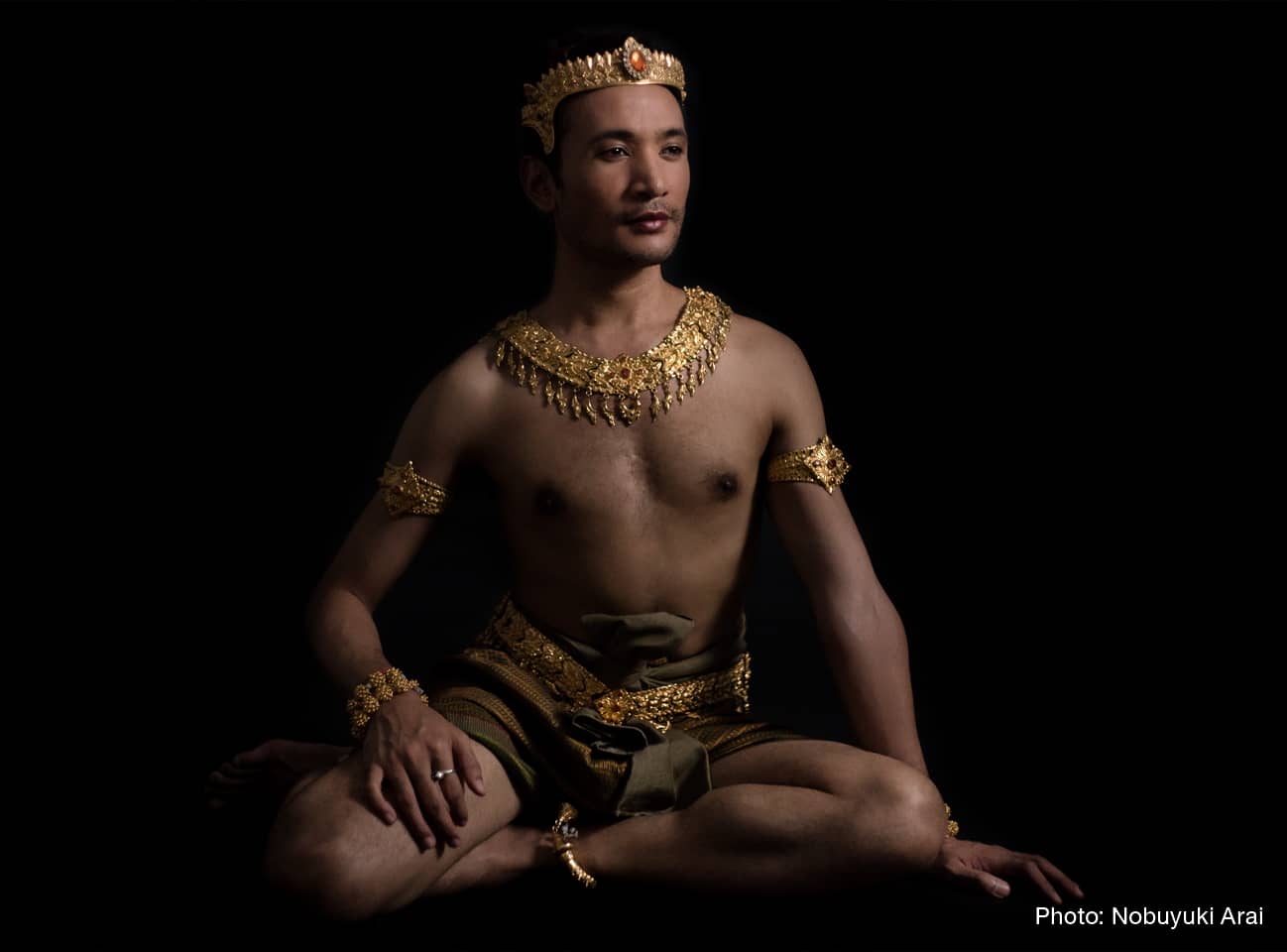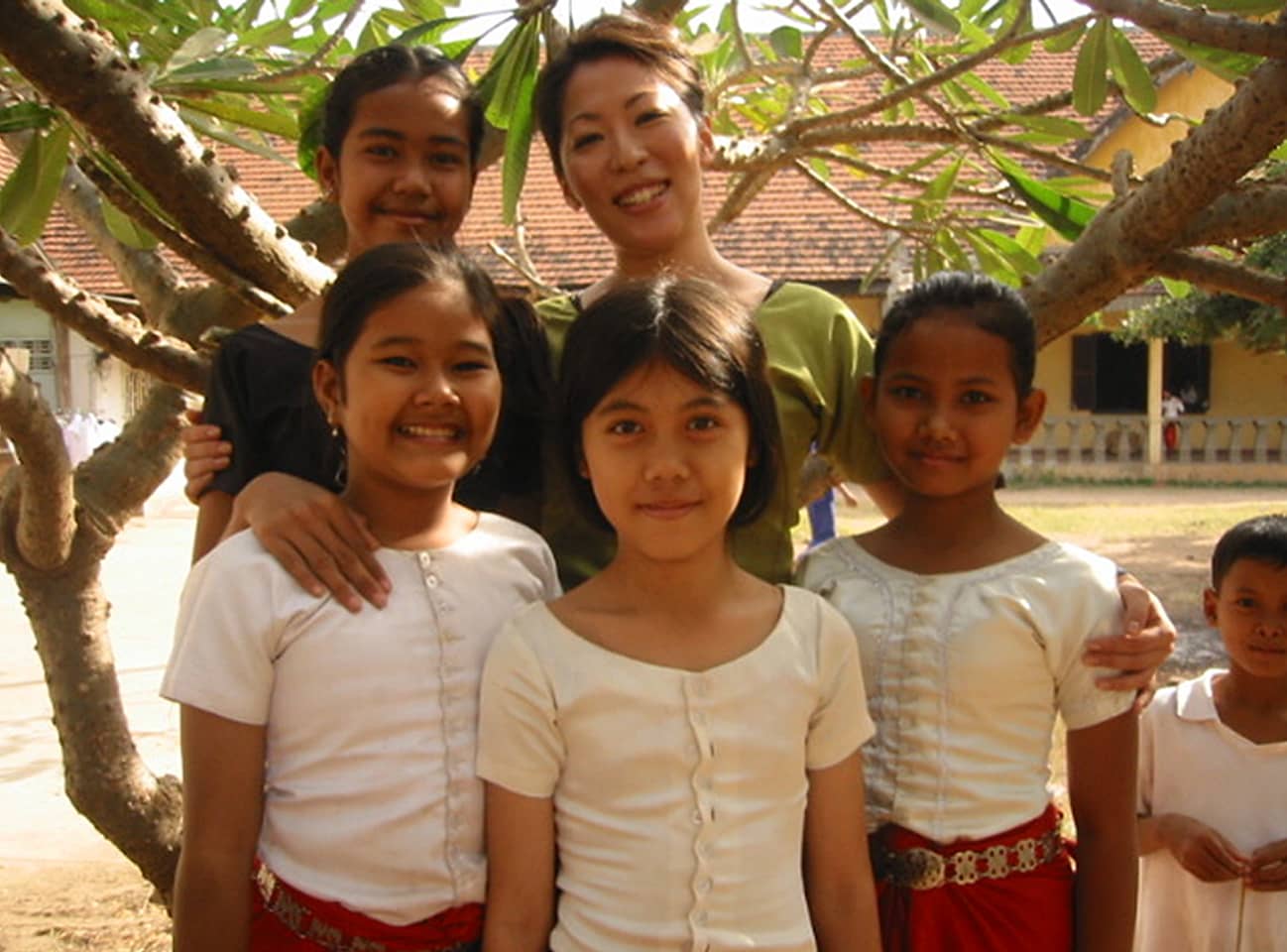Robam Boran, a Cambodian classical dance with a history of more than 1,000 years, has been attracting attention as a tourism resource in recent years. From the standpoint of comparative education, Professor Saori Hagai focuses on Robam Boran’s artistic apprenticeship education. Based on her field research, she traces the historical evolution of how the Robam Boran has been passed down over the generations.
The transmission of classical dance at the mercy of political regimes
The classical dance Robam Boran is known as one of the prime examples of Cambodian traditional culture. In recent years, classical dances like this have come into the limelight as a tourism resource in Cambodia. “Since Cambodian classical dance was registered as a UNESCO Intangible Cultural Heritage in 2003, the government has been actively promoting it as a means of attracting tourists. Classical dance also represents ‘Khmer-ness’, that is, the identity of the Khmer people, who make up the majority of Cambodia's population. Although some are skeptical about its consumption as entertainment for tourists, the promotion of classical dance is also linked to the country's strategy to maintain its 'Khmer-ness' in the midst of globalization,” explains Saori Hagai, who uses the approach of comparative education to trace the historical evolution of the classical dance Robam Boran and how it has been transformed and passed down to the present day.
According to Hagai, Robam Boran has a history of more than 1,000 years and has long been passed down in the royal court as a ritual of dedication to the gods and visualization of the sanctity of the king. She says that, in the 18th century during the reign of King Norodom, about 500 female dancers lived at the court and were trained as apprentices under a strict system of control. Since the modern era, however, every time administrations have changed, the transmission of dance has also been forced to undergo a transformation. She explains: “After gaining independence from France in 1953, Sihanouk began reforming higher education in 1965 as the modern nation was being built. When the Royal University of Fine Arts was founded as part of this effort, the venue for transmitting the classical dance shifted from the court to the university.”
The transmission of classical dance is occurring both within and outside of Cambodia. “Under the Pol Pot regime that began in 1975, arts education in the country came to a halt. Since then, the Cambodian diaspora, that is, refugees who fled oppression and found asylum abroad, has been working to carry on the Robam Boran in their respective countries,” says Hagai. Around 150,000 Cambodians have emigrated to the United States, and the Khmer diaspora that settled in Long Beach, California have played a central role to the transmission of Robam Boran. “One key figure is Prumsodun Ok, a world-renowned Robam Boran dancer and instructor. Ok moved from the United States to Cambodia in 2015 to found the country's first gay male classical dance troupe. As a new leader of classical dance transmission, he is expanding his activities around the world,” says Hagai.

Apprentice education passed down in the schooling of dance education
Hagai has conducted research at the Royal University of Fine Arts, currently the only comprehensive dance education school in the Cambodia, and at private dance schools run by the members of the diaspora. By joining practices and engaging in participant observation, as well as conducting interviews with teachers and students, she reveals what has been inherited and what has been transformed in artistic apprentice education.
“Historically speaking, the transmission of the art of Robam Boran during the court period was dominated by imitative repetition. Students learned by watching the teacher's movements and feeling the teacher's instructive body touches, and they acquired the techniques by repeating this process. Then, in the 1960s, oral instruction began to be offered as part of the schooling of dance education. The most notable change was the introduction of a curriculum. This led to the development of a more formal education system centered on dance schools,” explains Hagai.
On the other hand, there are some things that have been handed down unchanged over the generations. The first is the master-apprentice relationship, known as sampeah kru. This is part of artistic apprentice education in which students learn the art through an intense relationship with a single teacher, while also being exposed to the teacher's individuality and professional views, and this relationship continues throughout their lives. Hagai's research confirmed that the ritual of the sampeah kru, which visualizes respect for teachers, permeates contemporary diaspora folk dance schools as well.
The second is that only women can be dancers. “Historically, Robam Boran was not limited to women, as records show that male dancers danced until the 10th century. However, since the 18th century, when the discourse was created that only women could dance the Robam Boran because of their physical characteristics, this has been followed as 'tradition' without giving it any critical reflection,” says Hagai.

Overcoming challenges to carry on classical dance outside of Cambodia
Hagai is keeping a close eye on developments not only in Cambodia but also outside the country. “While discussions within the country often get reduced to questions like 'Should Robam Boran be passed down by men or women?', members of the diaspora are moving beyond such limitations. They are reimagining new ways of transmission by addressing broader issues within the traditional artistic apprentice education, including gender, sexuality, and identity,” says Hagai. She sees the inclusion of gay men in the diaspora folk dance school founded by Ok as another indication of this, stating: “I would like to look at the impact that these Cambodians outside the country will have on the transmission of classical dance within the country.” She is also focusing on the Cambodian diaspora in Japan. Recently, she has embarked on a study of the initiatives of the Khmer diaspora living in Kanagawa Prefecture to carry on the Robam Boran tradition. “I also plan on looking at what it means for these people to carry on the tradition of Cambodian classical dance,” says Hagai.
Global public opinion may be one of the channels through which the transmission of classical dance can be transformed, and in terms of the "outsiders' view," Hagai believes that tourists visiting Cambodia can also play a role.